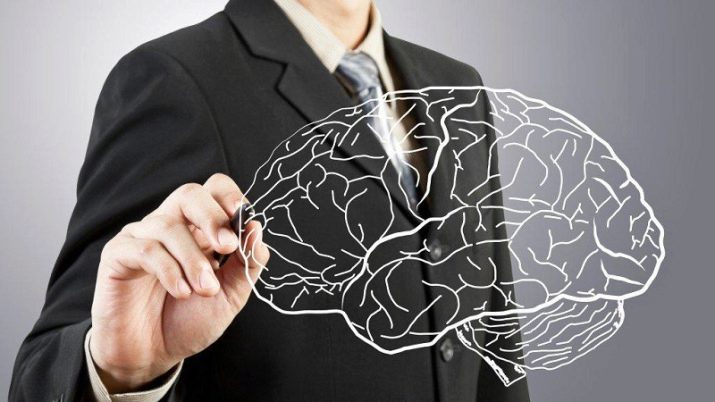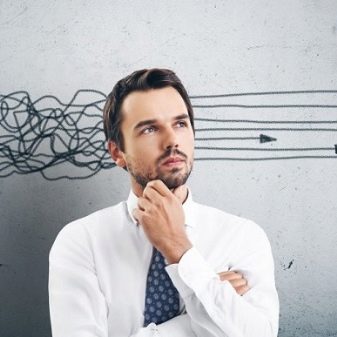What is involuntary attention?

Every minute, if a person is awake, but awake, his interest sharpens on something or someone. This is how an elementary kind of attention works, namely involuntary attention. This kind of thinking activity is inherent in both very young children and adults. However, even animals are not deprived of this kind of attention.
Definition of involuntary attention
First, let's look at the question - what is attention in general, and how it works. Attention accompanies any of our actions. Without such a property of the psyche, humanity could not survive in a complex world.
In psychology, it is generally accepted that attention is a state in which concentration of concentration (conscious or unconscious) occurs on the same information coming through the senses. Please note that other information is ignored in this case.

This function can have both its own parameters and its own characteristics. They give a vivid characteristic of the capabilities and abilities of the human person. Let's consider them in more detail.
- Concentration determines the strength of concentration on an object. At the same time, the circle of objects for strong enthusiasm is greatly reduced, and an in-depth study of the object in question takes place.
- The volume can include such a number of objects that the individual is able to perceive simultaneously. It depends on the individual capabilities of a person, namely, on professional skills, on the volume of short-term memory, on life experience, etc.
- Distribution gives a person the ability to focus his attention on several objects at once.Distributive ability is associated primarily with work or educational activities. In the implementation of the distribution of interest in the department of optimal excitability of the cerebral cortex, inhibition occurs in a partial way, due to which these areas are able to control the simultaneous execution of several functions at once. For example, a person can perform the following actions: drink coffee, read and write information. The more developed the distribution function of a person, the easier it is for him to perform various types of activities at the same time.
- Stability controls the concentration of attention for a certain time on an object or on a separate part of it. Stability of attention directly depends on the variety of actions performed or impressions from the resulting picture.
- The opposite property of resilience is distraction. Usually it is expressed in hesitation or weakening of concentration when a person looks at an object. It must be remembered that enthusiasm fluctuations occur even during strenuous work. And if such fluctuations have short intervals, then they do not affect the stability of interest.
- Switching interest consists in transferring it from one object to another. If the nature of the activity changes dramatically and the setting of new tasks arises, then there is a switch of interest from one object to another. In this case, a person uses volitional efforts.
You need to know the following.
- Attention is also directly related to emotion. In addition, it depends on changes in the human body, namely physiological conditions (respiratory, motor and vascular reactions). Concentration of interest is provided by all motor functions of the human body.
- A person's attention is directed to the content of an image. It controls this imaginative content and shapes the mental actions of the individual.
- Attention in some cases may have limited capabilities. This happens when information from different stimuli creates general interference and the processing capacity for the brain reaches the limit. For example, when a person is watching an interesting movie on TV, and there is a kettle on the gas stove. Often, it boils away, since a person's brain activity is aimed at observing the vivid pictures taking place on the screen.


Attention is shaped and varied. It is divided into such types.
- Arbitrary. This function manifests itself when a person makes some effort to turn his mental activity on something or someone. This focus is needed in order to master new knowledge or information. This function in humans is developed over the years and is not given to him at birth. The development of intelligence directly depends on its formation. The main function of such attention is the active regulation of the course of mental processes. For example, it is thanks to the work of voluntary attention that a person can extract the necessary information from memory.
- Involuntary attention is very different from voluntary, as it is usually caused by external causes. At the same time, a person does not make any special efforts and does not set any goals in order to turn his gaze on the arisen image. Involuntary interest can turn on and function without any effort on the part of human consciousness. It can also quickly switch from object to object. The stimuli for arousing involuntary interest are the various needs of the individual, which are very significant for him. Also, involuntary attention strongly depends on the general direction of conscious activity and the character of a person.It can arise even when the conscious intentions and volitional efforts on the part of a person's consciousness are not manifested in any way. Thanks to the factor under consideration, an individual can quickly navigate in constantly changing environmental conditions. It is because of the inclusion of involuntary attention that the objects that are most important at the moment are highlighted.
- There is also post-spontaneous attentionwhich includes part of both voluntary and involuntary attention.


What is it characterized by?
Involuntary attention can be called emotional and passively meaningful. A person focuses his attention on information or on an object only because at this very moment these factors are most significant for him. At the moment of inertia, dependence on the object of interest arises. At the same time, a person does not make special efforts to excite his mental activity. If attention is caused by a surge of emotions, then the connection between the object of attention and interests, needs, or emotions becomes the most stable. And even in this case, there is no specially directed concentration on the object.
Any stimulus that has a certain strength of action attracts interest in one way or another. Involuntary attention occurs due to the surge of intellectual, aesthetic or moral feelings. And this process does not lend itself to any regulation. All this happens because a person, when the factor in question occurs, experiences either admiration, or disappointment, or pain, or delight, etc. for quite a long time.
Prolonged and involuntary attention to any things or to information is caused by the persistent interest of a person. And this is the main reason for the occurrence of involuntary attention.

Conditions of occurrence
A person cannot live without learning something new and interesting. Interest helps people to know the world. Without this factor, it is impossible to remember the significant details that occur around any of us. In addition, protective and orientation reflexes make our consciousness react with lightning speed to incomprehensible sounds or bright light. Sometimes such manifestations save a person's life in an extreme situation. For example, when a car is moving towards it with the headlights on and a buzzing horn. In addition, an instant reaction to newly arisen circumstances will force any of us to make the right decision in case of manifestations of problems from the outside world. Thanks to the attention we are considering, we can isolate the threat that has arisen from the general picture and structure our behavior in such a way as to remain completely safe.
The mechanism of involuntary attention was formed along with the evolutionary development of mankind. Our ancestors had to get food not in supermarkets, but in the wild, where they constantly met predators. Therefore, the work of the above mechanism in every reasonable person occurs automatically and works independently of consciousness. Reactions of this kind can occur when the following occurs:
- movement of any object (any movement can be potentially dangerous);
- when a new and inexplicable phenomenon appears (what is unknown can be dangerous);
- very loud or strong impact (sudden sound or bright light may indicate danger).

Any human activity should be of interest. Activity gives any of us the opportunity to live and create fully. Interest just plays the role of that locomotive that moves our life forward. Consider the conditions under which involuntary attention occurs.
- If any sound is heard. Any increase or decrease in tone can also attract people's attention.
- Pause. When it occurs, a person begins to show interest.For example, if the music played loudly and suddenly died down, the person looks for the causes of this problem, and this is how his immediate interest is manifested.
- Bright colors and light. If the lamp turns on unexpectedly, then the person involuntarily shows curiosity about this event. Bright shades of wildflowers can arouse delight and interest on the part of an individual.
- Any movement that begins to happen around us also piques interest. A sudden gust of wind can stir hair or clothing. This movement of nature attracts involuntary attention.
- Emotional surge. At the sight of any bright event, a person's interest is necessarily activated. For example, if he sees an impartial incident, then this event will evoke emotions and focus on the problem.
- Humor can also spark interest. We always look with curiosity at various pictures that attract with their unobtrusive wit.

Varieties
Involuntary attention has a variety of forms. Let's consider this issue in more detail.
- Involuntary. It manifests itself when a person simply looks at objects during some kind of rest. It all depends on individual perception, since attention in this case is attracted by objects that are most significant for a particular individual. For example, someone loves nature. While in a relaxed state, he pays attention to the rustle of foliage and vibrations of tree trunks.
- Forced. Designed for contrasts: objects move quickly or abruptly, attract the eye with their uniqueness and novelty, or have a physiological significance. It is this type of involuntary attention that is based on human instincts. For example, a guy sees a beautiful girl, and this arouses genuine interest.
- Habitual. Based on everyday activities and algorithms. Usually this direction is associated with a person's professional or educational activities. It is considered the highest form of involuntary attention, as it has all the characteristics of voluntary attention.
An example in this case would be a driver who is driving a car and his attention is focused on the road.









